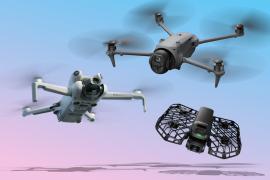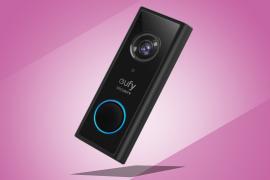Best budget camera phones in 2025 for affordable photography
After the best budget camera phone to capture stunning photos without breaking the bank? We've reviewed the very best
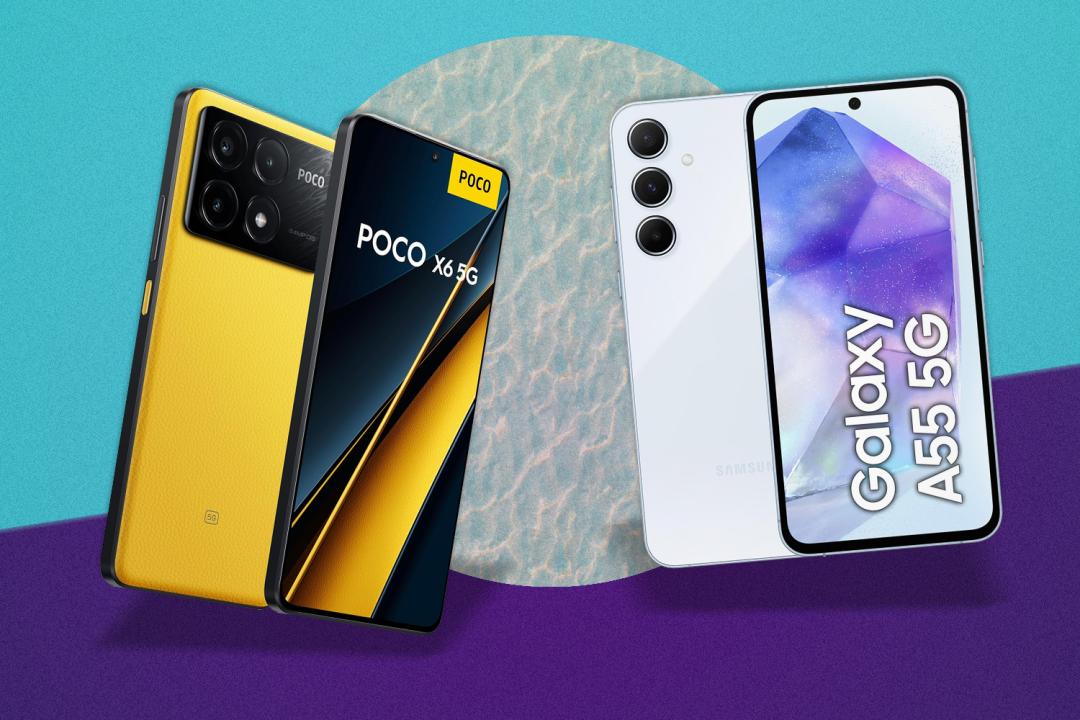
After the best budget camera phone to capture stunning photos without breaking the bank? We don’t blame you. With advancements in camera phone tech, you no longer need to spend a fortune to get a capable shooter.
Whether you’re an aspiring photographer or simply want to upgrade your phone photography game, our hand-picked selection of affordable options below will have you snapping perfect portraits and laudable landscape shots in no time.
With that said, here’s our guide to the best budget camera phones that all cost below $500/£500.
Why you can trust Stuff: Our team of experts rigorously test each product and provide honest, unbiased reviews to help you make informed decisions. For more details, read how we test and rate products.
Quick list: what’s the best budget camera phone?
We think the Google Pixel 9a (buy now) is the best mid-range smartphone you can buy. It’s the latest phone in Google’s more affordable ‘a’ series. You’ll love its impeccable camera skills, punchy performance, minimalist Pixel design and pure Android experience.
The CMF Phone 1 (buy now) is proof that decent budget phones still exist. Some clever accessories set the CMF Phone 1 apart from cheap rivals; great performance, long battery life and a gorgeous screen better almost all of ’em.
The Samsung Galaxy A56 (buy now) gets S25-influenced styling and familiar photo processing. It’s a great value camera phone.
The Redmi Note 13 Pro (buy now) isn’t a major upgrade over last year’s effort, but the 200MP sensor is very impressive.
The Poco F6 Pro 5G (buy now) has a versatile triple-camera setup. It is a great budget camera phone if you like playing with different perspectives.
The best budget camera phone you can buy today:
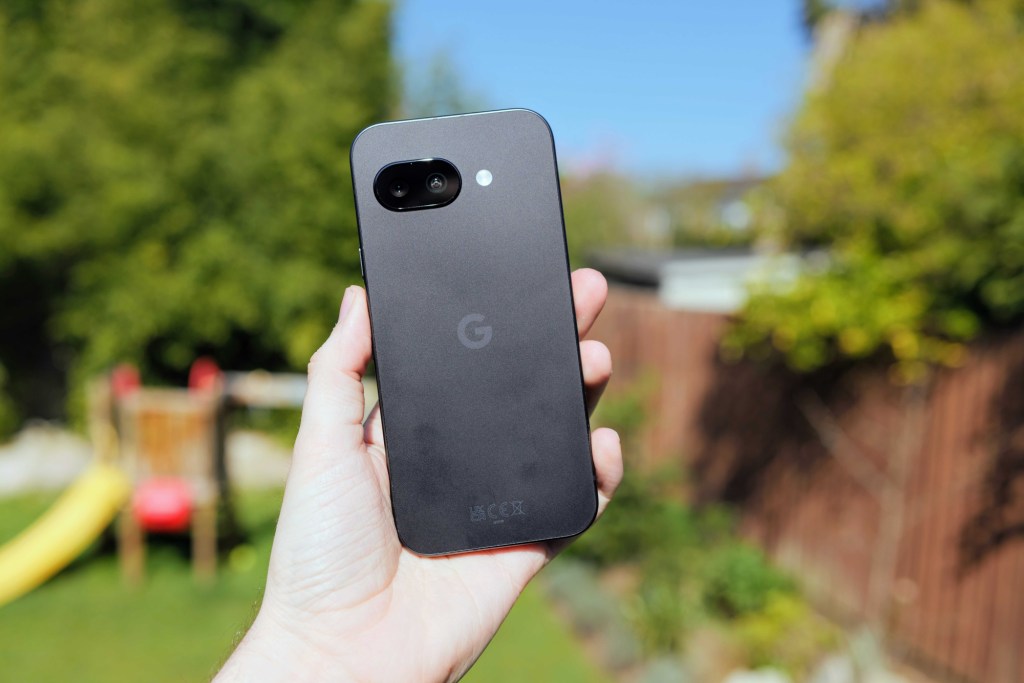
1. Google Pixel 9a
Stuff Verdict
With similar hardware to its more expensive siblings, the Pixel 9a is the cheapest way to access Google’s AI smarts. With amazing photography skills, the Pixel 9a is the mid-range smartphone to beat.
Pros
- Same superb photography skills we expect from Pixel phones
- Performance punches above its price bracket
- Slick design and strong build
Cons
- Charging speeds remain behind rivals
- Bezels could be smaller
| Google Pixel 9a specs | |
|---|---|
| Screen | 6.3in Actua Display, 1080 x 2424 OLED, 2700 nits, 60-120Hz |
| CPU | Google Tensor G4 |
| Memory | 8GB RAM |
| Cameras | 48MP f/1.7 main + 13MP,f/2.2 ultrawide rear 13MP, f/2.2 front |
| Storage | 128 GB/256 GB |
| Operating system | Android 15 |
| Battery | 5100 mAh |
| Dimensions | 154.7 x 73.3 x 8.9mm, 185.9 g 6.1 x 2.9 x 0.4in, 6.6 oz |
Looking for the best budget camera phone experience? That’ll come in the form of the Google Pixel 9a. It’s part of Google’s affordable ‘A’ series, which promises a similar Pixel experience to its more expensive siblings for less money.
The photography experience is excellent here. It has an upgraded 48MP sensor compared to the Pixel 8a, and the results really show. The amount of detail in the images is really impressive, with Google nailing both close-up and distance shots. It’s Google’s processing that is really impressive, with Google’s smarts making it hard to take a bad picture.
Paired with punchy performance to a minimalist Pixel design and pure Android experience, even if you’re not interested in photography, we think this is the best smartphone you can get under $500/£500.
- Read more: Google Pixel 9a review
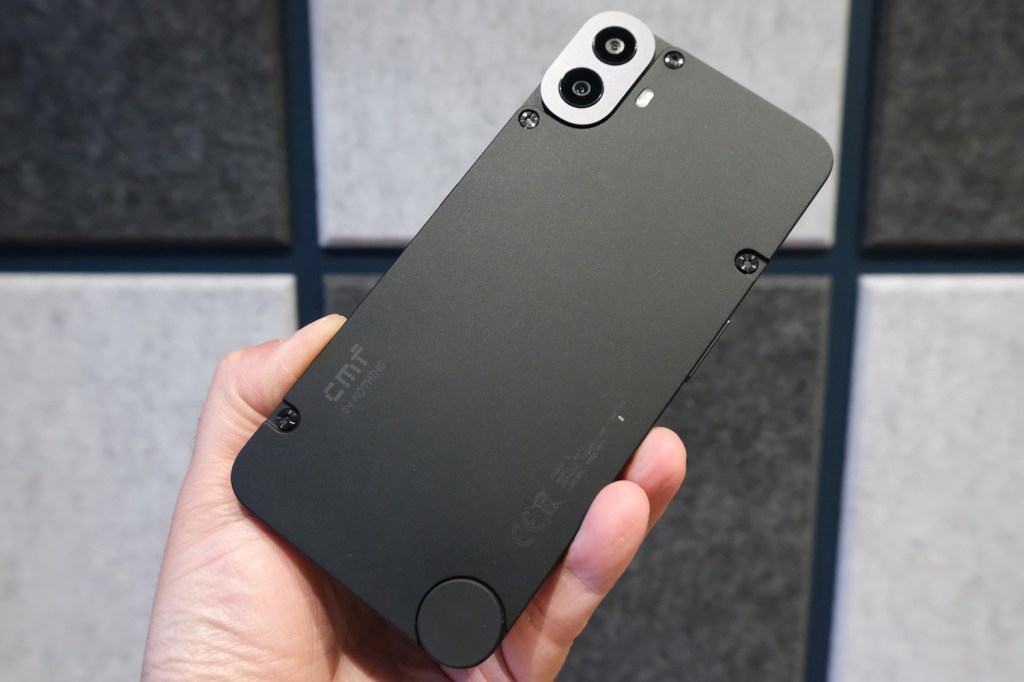
2. CMF Phone 1
Stuff Verdict
Proof that decent budget phones still exist. Some clever accessories set the CMF Phone 1 apart from cheap rivals; great performance, long battery life and a gorgeous screen better almost all of ’em.
Pros
- Performance and longevity you don’t expect for the money
- Eye-pleasing OLED display from a class above
- Screw-on accessories a neat design twist
Cons
- Speaker only mono
- Software update promise could be longer
| CMF Phone 1 specs | |
| Screen | 6.67in, 2400×1080, 120Hz AMOLED |
| CPU | MediaTek Dimensity 7300 |
| Memory | 6/8GB RAM |
| Cameras | 50MP, f/1.8 rear w/ portrait sensor 16MP front |
| Storage | 128/256GB on-board, microSD expansion |
| Operating system | Android 14 w/ NothingOS 2.6 |
| Battery | 5000mAh w/ 33W wired charging |
| Dimensions | 164x78x8.2mm, 197g |
If you’re after a budget-friendly phone that doesn’t compromise on camera quality, the CMF Phone 1 deserves your attention. This Nothing sub-brand offering boasts a 50MP main camera which uses pixel binning to produce detailed 12.5MP shots. The results are surprisingly impressive for the price, delivering well-balanced exposures and punchy contrast in daylight conditions.
The 2MP portrait sensor, while not groundbreaking, does a decent job with bokeh effects for those all-important portrait shots, and low-light performance is pretty decent too — though the lack of optical image stabilisation means you’ll need a steady hand when using night mode. Video recording caps out at 4K/30fps, which is rather respectable at this price point.
Beyond its photographic capabilities, the CMF Phone 1 stands out with its bright colour options, unique modular design (a very welcome breath of fresh air), and clean NothingOS interface. It’s a compelling option for those seeking capable smartphone photography without breaking the bank.
- Read more: CMF Phone 1 review
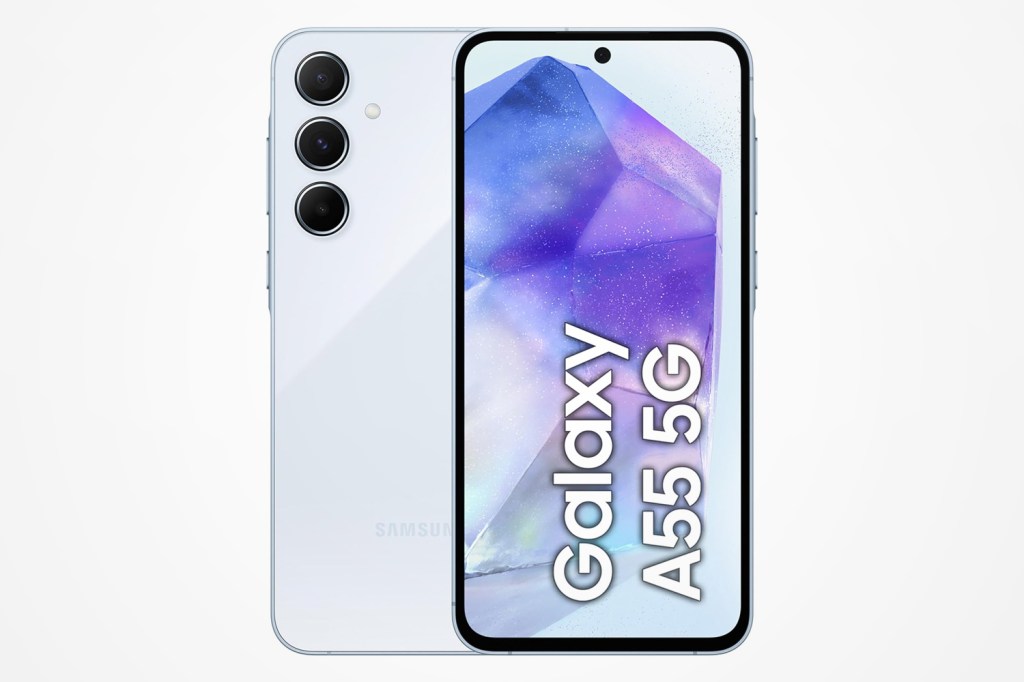
3. Samsung Galaxy A56
Stuff Verdict
A familiar face, long feature list and an attainable price are sure to make the Galaxy A56 a hit with Samsung fans – but the lesser-known competition has it bested on specs.
Pros
- Materials and build quality on par with pricier phones
- Big, bright OLED screen
- Decent performance and battery life for the price
Cons
- Skips out on almost all Galaxy AI features
- Secondary cameras don’t add much to the package
- Don’t care about brand names? Rivals offer more compelling hardware
| Samsung Galaxy A56 specs | |
|---|---|
| Screen | 6.7in, 2340×1080 AMOLED w/ 120Hz |
| Processor | Samsung Exynos 1580 |
| Memory | 8GB RAM |
| Storage | 128/256GB on-board |
| Cameras | 50 MP + 12MP ultrawide + 5MP macro rear 12MP front |
| Operating system | Android 15 w/ One UI |
| Battery | 5000mAh w/ 45W wired charging |
| Dimensions | 162x78x7.4mm, 198g |
Want the Samsung prestige without the high-end price tag? Then the A56 is a 5G contender worthy of your shortlist. With a price tag well below the lofty heights of the Galaxy S25 range, this is a super affordable 5G handset which sacrifices some flagship style and power, while still providing a solid smartphone experience.
It actually looks and feels like a far pricier phone, the colourful AMOLED display shines brightly, and the software ecosystem is as appealing as ever for those already invested in it. Battery life and charging speeds even eclipse the more expensive Galaxy S25. And unlike previous A series phones (which massively disappointed on the power front), we’re pleased to report that the A56’s Exynos 1580 CPU and 8 GB of RAM make for a far smoother experience.
Throw in fast 45W charging, and you’ve got yourself a more affordable Samsung handset that provides the highly coveted Samsung-esque experience, at a far more palatable price.
- Read more: Samsung Galaxy A56 review

4. Redmi Note 13 Pro 5G
Stuff Verdict
Another fast-charging, clear-snapping mid-ranger at a tempting price. The Redmi Note 13 Pro+ isn’t a major upgrade over last year’s effort, though.
Pros
- Very capable main camera sensor
- Sharp, colourful and bright display
Cons
- Backup snappers still second class citizens
- 3.5mm port finally bites the dust
| Xiaomi Redmi Note 13 Pro specs | |
|---|---|
| Screen | 6.67in, 2712×1220 AMOLED w/ 120Hz refresh rate |
| CPU | Qualcomm SM7435-AB Snapdragon 7s Gen 2 |
| Memory | 6/8/12GB RAM |
| Cameras | 200MP main, 8MP ultra-wide, 2MP maco rear 16MP front |
| Storage | 128/256/512GBGB on-board |
| Operating system | Android 13, upgradable to Android 14, HyperOS |
| Battery | 5100mAh, 67W wired charging |
| Dimensions | 161.2×74.2x8mm, 187g |
A high pixel count isn’t the be-all and end-all when it comes to phone photography – but it certainly helps. Xiaomi sub-brand Redmi went down that route last year with 200MP sensors for its mid-range smartphones, and is now looking for similar success with the Redmi Note 13 Pro+.
Is it any good? You can’t deny the 200MP sensor can capture an excellent amount of detail. Fine-grain clarity is resolved well, even at a distance. Redmi’s contrast-heavy processing ensures images are suitably impactful. Colours are vivid and there’s plenty of dynamic range on show during the daytime.
- Read more: Redmi Note 13 Pro+ review
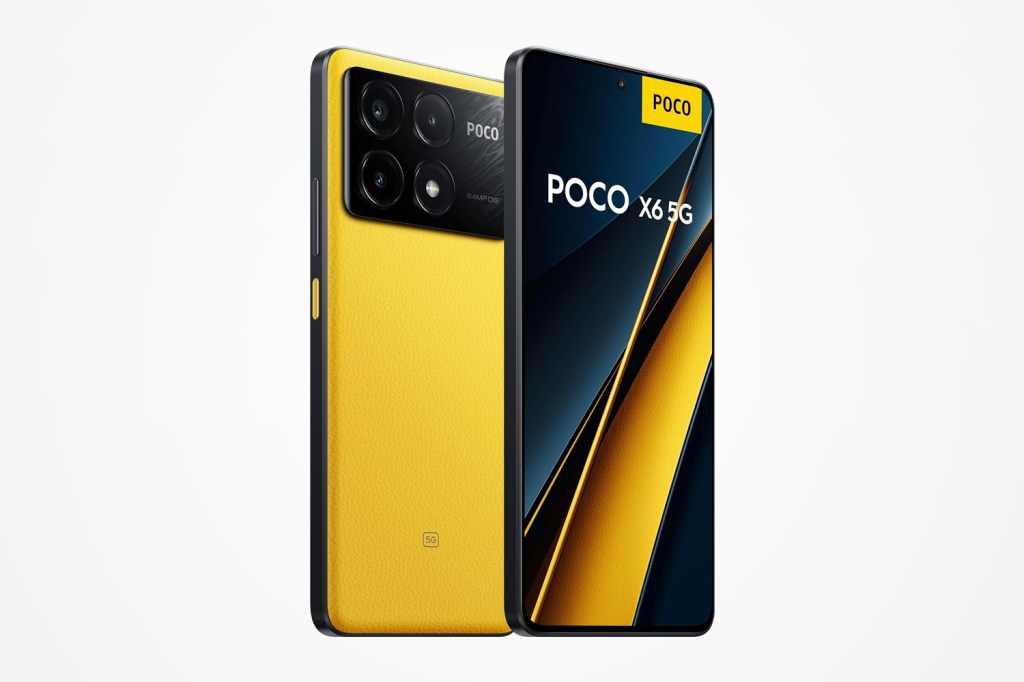
5. Poco F6 Pro 5G
Stuff Verdict
With a versatile triple-camera setup, the Poco F6 Pro is a great budget camera phone if you like playing with different perspectives.
Pros
- Great screen and speakers
- Premium build
Cons
- Expandable storage is missed
- Higher IP rating would be appreciated
| Poco F6 Pro 5G specs | |
|---|---|
| Screen | 6.67in, 3299×1440 OLED w/ 120Hz |
| CPU | Qualcomm Snapdragon 8 Gen 2 |
| Memory | 8/16GB RAM |
| Cameras | 50MP main with OIS + 8MP ultrawide + 2MP macro rear 16MP, front |
| Storage | 256GB/1TB |
| Operating system | Android 14 |
| Battery | 5000 mAh w/ 120W wired |
| Dimensions | 160.9 x 75 x 8.2mm, 209 g |
The POCO X6 Pro 5G packs a versatile triple-camera setup, headlined by a 64MP main sensor with optical image stabilization (OIS). This main shooter delivers detailed and sharp photos even in challenging lighting conditions, while the 8MP ultrawide camera offers a 118-degree field of view — ideal for capturing expansive landscapes or group shots.
While the 2MP macro lens may not be groundbreaking, it still lets you explore more niche creative close-up photography, if that’s your thing. The camera app itself offers a range of creative modes, including night mode, portrait mode with adjustable bokeh, and slow-motion video.
How to choose the best budget camera phone for you
We go into a lot of detail on what to look for in a smartphone snapper in our best camera phone guide, so do check that out if you’re interested.
Ultimately, though, when choosing a smartphone for its camera capabilities, focus on several key aspects beyond typical smartphone specs. Generally, higher megapixel counts and larger sensors contribute to better image quality, (the latter is especially helpful in low-light conditions) and advanced computational photography features, like those in Google Pixel phones, enhance photos by optimizing exposure, colour accuracy, and dynamic range.
The lens system is also crucial, with options like ultra-wide-angle and telephoto lenses offering versatility for different photography styles. Aperture size impacts light capture and depth-of-field effects, while Optical Image Stabilization (OIS) helps reduce blurriness in photos and videos. Features like HDR, portrait mode, and night mode further improve the photography experience.
For video recording, consider the phone’s resolution, frame rate, and stabilization features.
Oh, and don’t forget the front-facing camera; it should have good specs and selfie-specific modes to ensure clear and flattering self-portraits and video calls.
If you’re looking for more specific buying recommendations, then you can check out Stuff’s guides to the best smartphone for gaming and the best Android phones.
How we test the best budget camera phones
We have used and reviewed every phone on this list, so you can trust us when it comes to recommending the budget camera phone to buy.
We usually spend a week or longer reviewing phones, testing out all of the software features, build quality and performance. Our reviews are very comprehensive, testing every single aspect of a smartphone, including battery life, quality of the display, and camera.
For more information on Stuff’s rating and review process, read our page on how we test products.

